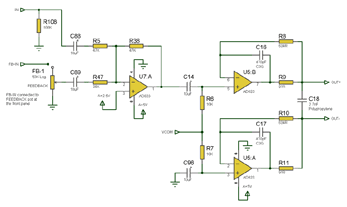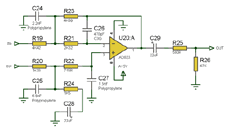4xD - Schematic
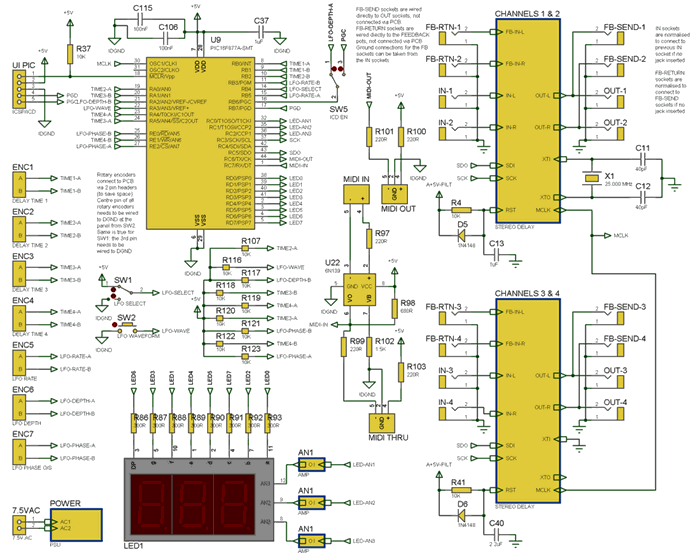
| STEREO DELAY sub-circuit |
|||||||
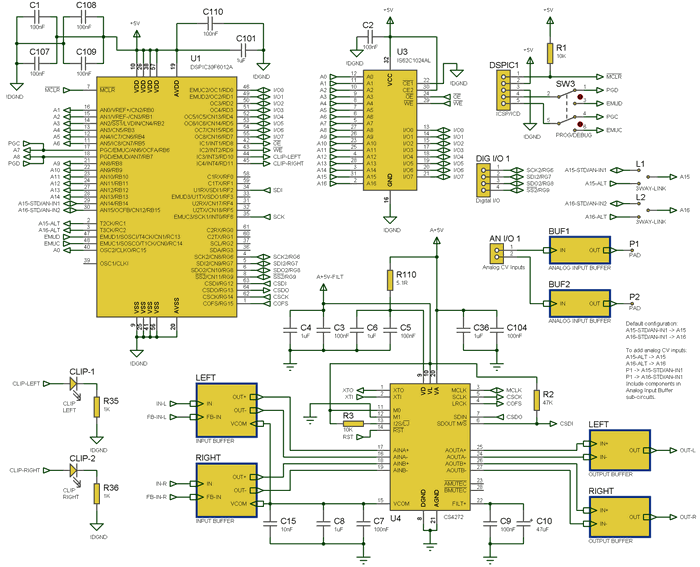 |
|||||||
PSU sub-circuit |
AMP sub-circuit |
||||||
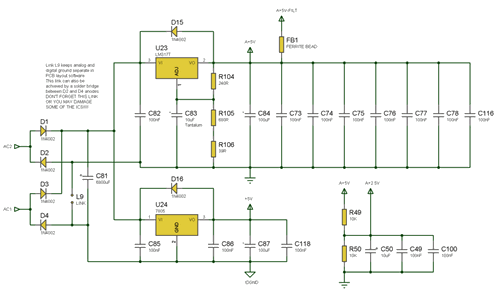 |
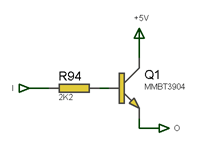 |
||||||
|
|||||||
Download the schematic as a printable PDF
SW5 is PCB mounted and is used to enable programming/debugging of the PIC16F877A at the expense of disabling the LFO DEPTH encoder (if this is needed during debugging there's a software option to swap the LFO DEPTH and LFO RATE encoders).
SW3/SW4 are PCB mounted and are used to switch between programming and debugging of the dsPIC30F6012As. If no ICD2 is connected the position of this switch doesn't matter.
The circuit can be set up to have up to 4 analog CV inputs, although the default software doesn't make use of this, and in fact uses the analog input pins of the dsPICs to address the SRAM. If you want to modify the software to make use of analog CV inputs, simply include the components in the CV INPUT BUFFER sub-circuit, and configure the links as described in the following paragraph.
In the default configuration, links L1/L3 should be connected with A15-STD/AN-IN1 -> A15 and links L2/L4 with A16-STD/AN-IN2 -> A16, but in the case where analog CV inputs are desired these links should be connected with A15-ALT -> A15 and A16-ALT -> A16, and in addition connect pads P1/P3 -> L1/L3 A15-STD/AN-IN1 and P2/P4 -> L2/L4 A16-STD/AN-IN2. This will make the access of the SRAM slightly less efficient in software because the address bits A15 and A16 will not be part of the contiguous 16 bit block that is port B.
All opamps used are Burr-Brown OPA2340s (in the schematic Analog Devices AD823s are shown, but I'm not using these any more as the OPA2340s are cheaper and slightly better spec'ed). These were chosen because they work very nicely for audio, and they have rail-to-rail inputs and outputs. You may be able to find other opamps that could be used instead, but check the specs carefully - the inputs and outputs need to be able to comfortably swing at least between 0.4V and 4.6V with a 5V supply.
More ..
- Overview
- User manual
- Photos
- Audio samples
- Schematic
- Parts list
- PCB layout
- Source code
- Construction guide
- PCBs & Parts kits
- Surface mount soldering

